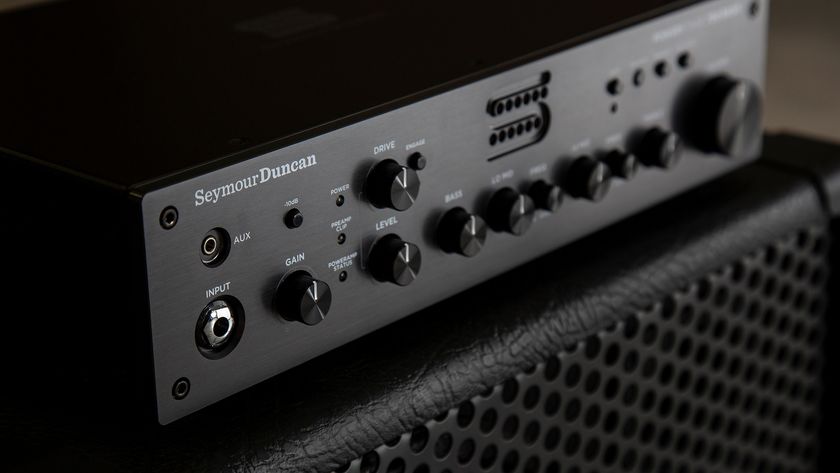Interview: Brian Vodinh on Ten Years with 10 Years

It’s been a little over a decade since bassist Lewis Cosby, vocalist Jesse Hasek, guitarist Ryan “Tater” Johnson and guitarist/drummer Brian Vodinh assembled the band known as 10 Years.
“We started the band in high school, for fun,” says Vodinh, “and during the course of those years we went from having no responsibilities and wanting to tour for the rest of our lives to now there are marriages and a couple of us have kids. We kind of grew up on that bus and we’ve all gone through so much.”
10 Years released their third album, Feeding The Wolves, in 2010. Since then, they’ve spent the better part of their time on the road — with touring drummer Matt Brown — revisiting markets, securing and growing their fan base and laying some rudimentary groundwork for their return to the studio in 2012.
Brian Vodinh recently discussed a decade of 10 Years and how the band found its groove.
It’s been almost ten years for 10 Years. What’s changed and what’s stayed the same?
Musically, our roots have kind of stayed the same. Each album is a snapshot of where we are at that specific time. A thread goes through each of them that lets the listener know that it’s us, but each album is always different. Our fans have even asked me why the albums sound so different, and “Are you going to make another one that sounds like ‘this’ or ‘that'?” It’s not a conscious decision that we have to make an album that sounds completely different. It’s just one of those things where right now I’m influenced by certain things, and there are things going on in my life that maybe make me gravitate toward a certain type of writing and guitar playing. It’s interesting how you evolve as a musician and how each album is a snapshot of where you are at that moment.
What is influencing you right now?
Get The Pick Newsletter
All the latest guitar news, interviews, lessons, reviews, deals and more, direct to your inbox!
We’re touring for the rest of this year, and then early next year we’ll be starting the early stages of a new album. There’s a song on Feeding The Wolves called “Fade Into (the Ocean)” that’s a little bit more progressive for us and a little bit longer, and the newer material that I’ve been leaning into is more in that realm: less traditional arrangements, a lot of interesting work with time signatures and polyrhythms. I’m still also a believer in sometimes three chords can change the world, but for us it’s fun to try and orchestrate some madness and do something different and interesting. Right now, I’m trying to shy away from the traditional songwriting fundamentals that we’ve always latched on to, and get outside of my own box and challenge myself a little bit.
Can you give readers a glimpse into those album snapshots?
As the saying goes, you have your entire life to write your first album, and Autumn Effect [2005] was like a collection of songs and ideas over the course of the years. When we wrote and recorded Division [2008], we were more in a symphonic, orchestral state of mind, because the songs could be produced in a very heavy manner, with very thick and rich, full guitars and bigger-sounding drums, but we wanted to go really organic on that album.
Also, the way we orchestrated the guitars on Division, there’s a lot of parts, and we didn’t go in saying, “There’s only two guitar players in the band, so let’s make it sound like two guitars, with one guy doing one thing and another guy doing another thing.” We went in and sometimes there are five or six parts going on simultaneously, and harmonies.
It’s not about making some big part that drills into your ear. It’s about creating an atmosphere and a lot of layers and textures. On Feeding The Wolves, we went with the “less is more” approach to the guitar parts and kept it fairly simple. A little bit more aggressive, a little bit more driving, less ethereal but more to the point. So each album has a different vibe, especially with the guitar playing and the parts.
You all refer to Feeding The Wolves as your third album, but as fans keep pointing out, it’s actually your fifth. The first two [Into the Half Moon, 2001, Killing All That Holds You, 2004] aren’t mentioned very much and they are difficult to find. Is it a deliberate decision on the part of the band to not discuss them?
It’s not really a deliberate thing, but when I mention Feeding The Wolves as the third album, that’s the third one that’s available nationally and in stores. We had a couple of releases prior to our deal with Universal, but when we signed our deal we weren’t allowed to really get those out in mass quantities and put them in stores. They definitely still float around, and if fans are eager, they can find them, but sometimes it’s not so easy.
If you come to a show there’s a good chance you might be able to pick one up. Those albums were recorded and released … the first one, I think I was a sophomore in high school, so when I look back there’s certain parts where I go, “Oh, man, you can tell we were young there!” And there’s other parts where I’m like, “Hey, that’s not so bad; that riff is cool.”
Back then, especially in high school, all I listened to was the Deftones, Korn, Metallica and Tool. We thought if we could write a riff or a vocal part that we thought was as cool as what they were doing, then that was it and that was the big time for us! Now, when I listen back, I know that we were trying to emulate those bands on the early stuff. It was a little bit heavier too. I think that may have been being 16 years old and so excited and, “Let’s just write some heavy stuff and go!” I was probably 17 or 18 when we figured out, “Well, we’re not these bands. We can use the elements that inspired us that they’ve provided, but we have to branch out and figure out who 10 Years is.”
When did you figure it out?
It happened naturally; we didn’t have to put too much emphasis on the trying part. When Jesse joined in 2001, we really found our stride. His voice is so unique and special that we can go through these ebbs and flows, musically, of making a heavy record and a not so heavy record and an experimental record or even more of a traditional record, and no matter what the music does, his voice is always going to be so recognizable. His voice has become part of that thread that is in every record and it allows people to know that it’s us.
Can you select one track from Feeding The Wolves that you think best represents the album and your guitar work?
“Fade Into (the Ocean)” came about in an interesting way. It’s the last song on the record and it wasn’t even supposed to be on the album. I tracked drums for all the songs that we were sure were going to go on the album, and after that, Howard Benson was like, “Why don’t you lay down some tracks for a couple of B-sides so we have them in case we need to put guitars on them later.” At that point we were trying to figure out what B-side songs to lay down, because we hadn’t really worked on anything else. I had this song floating around in my head that the other guys hadn’t even heard. I hadn’t played them a single riff of this at all.
I set up a click track and laid the drums down blindly, and everyone was like, “That’s six minutes long and you changed time signatures! Did you mess up a bunch on that?” I said, “No, just trust me, it’s going to be a little bit different.” Then I laid a scratch guitar track down to let everybody hear the idea of what the song was supposed to be. The second that happened, everybody in the room said, “This is not a B-side! This has to go on the record!” We had a creative spark, so we all powwowed in the room and started laying stuff in. Nobody had heard a single riff of this before that day, but it ended up being the song that piqued everyone’s interest the most. It kind of wrote itself on the spot as far as all the auxiliary parts and the vocals. That one was probably the most fun to do because it was spontaneous.
As far as the actual guitar parts, what we ended up doing a lot on that album — and I remember specifically on this — the cool tones throughout the verses and intro — for my live rig I’m using a Demeter for my dirty and for the clean I use Roland JC-120’s. In the studio I definitely wanted to use the Roland. It sounded really good by itself, but I felt like maybe I needed to mix it with something a little less effected and a little more solid and clean, so I used a Top Hat and I would do a double, one on the left and one on the right, of the Top Hat, and then the JC-120 was stereo, so basically I’d have four clean inputs there at any given time.
The dirty was the same kind of mentality: four tracks of dirty, just continually layering guitars, and then there’s a little solo section in there that we got to do some interesting stuff with. To be honest, I can’t remember the effects we had. I know I used a wah kind of half-cocked and maybe some flange or something like that. Miking the cabs — it’s Howard Benson, he’s produced all these huge records, you’ve got a whole team of people and I was like, “Man, this is going to be like Star Trek! We’re going to walk in, he’s going to have this crazy miking system and it’s going to be insane.” But honest to God they just used a 57 and moved it in front of the cabinet until they thought it sounded right, and then they’re like, “OK, go.”
“That’s it? Really? Aren’t you supposed to do all kinds of interesting, weird things?” “Absolutely not.” For my tones on a lot of that album I used a Bogner Shiva on its clean channel and a distortion pedal, so the heavy tone on the album is not a heavy channel or anything. And we experimented with quite a few pedals. I couldn’t even tell you the names because they were some boutique stuff that I’d never even heard of, but they sounded really great.
— Alison Richter
Photo: Kevin Estrada
Alison Richter interviews artists, producers, engineers and other music industry professionals for print and online publications. Read more of her interviews right here.




Alison Richter is a seasoned journalist who interviews musicians, producers, engineers, and other industry professionals, and covers mental health issues for GuitarWorld.com. Writing credits include a wide range of publications, including GuitarWorld.com, MusicRadar.com, Bass Player, TNAG Connoisseur, Reverb, Music Industry News, Acoustic, Drummer, Guitar.com, Gearphoria, She Shreds, Guitar Girl, and Collectible Guitar.
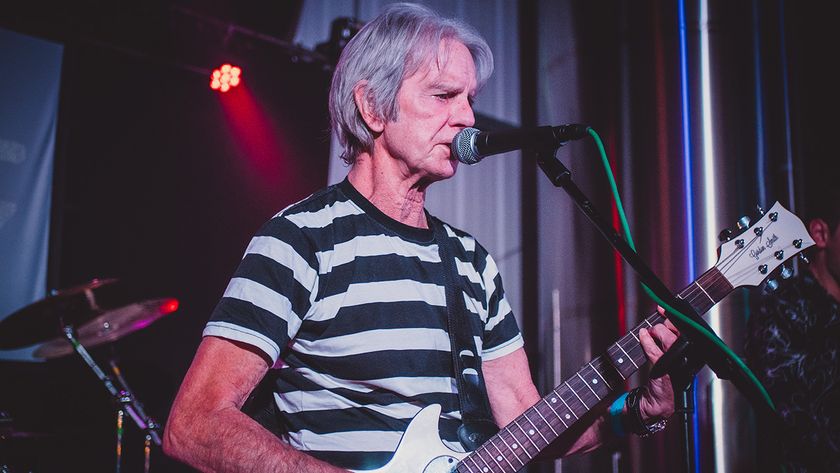
“I get asked, ‘What’s it like being a one-hit wonder?’ I say, ‘It’s better than being a no-hit wonder!’” The Vapors’ hit Turning Japanese was born at 4AM, but came to life when two guitarists were stuck into the same booth
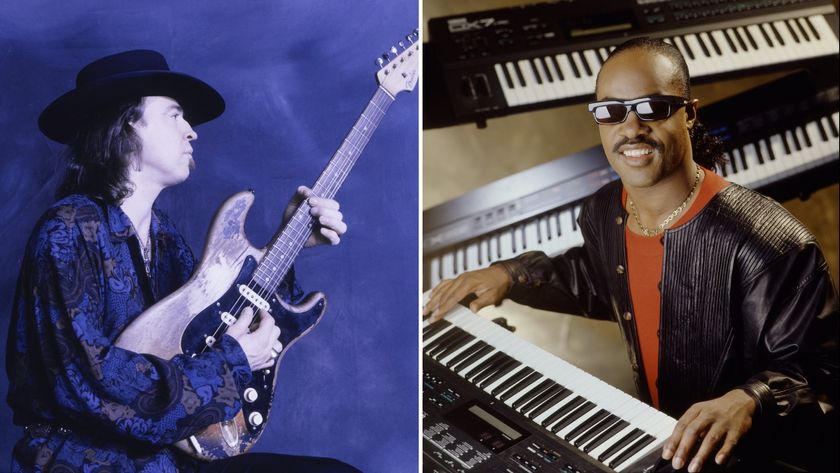
“Let's play... you start it off now, Stevie”: That time Stevie Wonder jammed with Stevie Ray Vaughan... and played SRV's number one Strat
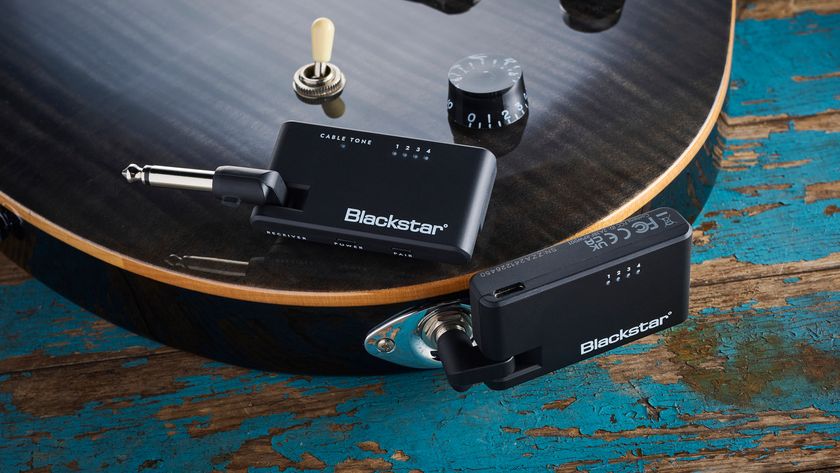
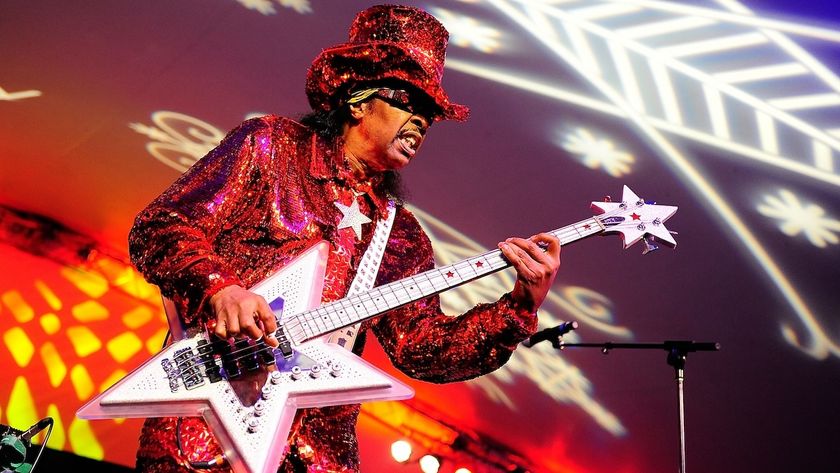


![[L-R] George Harrison, Aashish Khan and John Barham collaborate in the studio](https://cdn.mos.cms.futurecdn.net/VANJajEM56nLiJATg4P5Po-840-80.jpg)
